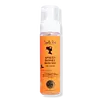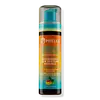What's inside
What's inside
 Key Ingredients
Key Ingredients

No key ingredients
 Benefits
Benefits

 Concerns
Concerns

 Ingredients Side-by-side
Ingredients Side-by-side

Water
Skin ConditioningOryza Sativa Extract
AbsorbentMel
EmollientUrtica Dioica Extract
AstringentCocamidopropyl Betaine
CleansingPolyquaternium-55
Polysorbate 20
EmulsifyingPvp
Emulsion StabilisingMethyl Gluceth-20
HumectantOleth-20
CleansingAloe Barbadensis Leaf Juice
Skin ConditioningPanthenol
Skin ConditioningPhenoxyethanol
PreservativeBenzoic Acid
MaskingEthylhexylglycerin
Skin ConditioningGlycereth-2 Cocoate
EmulsifyingQuaternium-75
Tocopheryl Acetate
AntioxidantSilk Amino Acids
HumectantDiethyl Phthalate
MaskingCitric Acid
BufferingWater, Oryza Sativa Extract, Mel, Urtica Dioica Extract, Cocamidopropyl Betaine, Polyquaternium-55, Polysorbate 20, Pvp, Methyl Gluceth-20, Oleth-20, Aloe Barbadensis Leaf Juice, Panthenol, Phenoxyethanol, Benzoic Acid, Ethylhexylglycerin, Glycereth-2 Cocoate, Quaternium-75, Tocopheryl Acetate, Silk Amino Acids, Diethyl Phthalate, Citric Acid
Water
Skin ConditioningAloe Barbadensis Leaf Juice
Skin ConditioningCocamidopropylamine Oxide
CleansingPolyquaternium-7
Olive Oil Glycereth-8 Esters
EmollientKeratin Amino Acids
Skin ConditioningMangifera Indica Seed Butter
Skin ConditioningOcimum Tenuiflorum Oil
EmollientOryza Sativa Extract
AbsorbentLactobacillus/Tomato Fruit Ferment Extract
Skin ConditioningAcyl Coenzyme A Desaturase
Skin ConditioningPolyquaternium-11
Polyquaternium-10
Citric Acid
BufferingSodium Benzoate
MaskingPotassium Sorbate
PreservativeParfum
MaskingWater, Aloe Barbadensis Leaf Juice, Cocamidopropylamine Oxide, Polyquaternium-7, Olive Oil Glycereth-8 Esters, Keratin Amino Acids, Mangifera Indica Seed Butter, Ocimum Tenuiflorum Oil, Oryza Sativa Extract, Lactobacillus/Tomato Fruit Ferment Extract, Acyl Coenzyme A Desaturase, Polyquaternium-11, Polyquaternium-10, Citric Acid, Sodium Benzoate, Potassium Sorbate, Parfum
Ingredients Explained
These ingredients are found in both products.
Ingredients higher up in an ingredient list are typically present in a larger amount.
Aloe Barbadensis Leaf Juice comes from leaves of the aloe plant. Aloe Barbadensis Leaf Juice is best known for helping to soothe sunburns. It is also anti-inflammatory, moisturizing, antiseptic, and can help heal wounds.
Aloe is packed with good stuff including Vitamins A, C, and E. These vitamins are antioxidants, which help fight free-radicals and the damage they may cause. Free-radicals are molecules that may damage your skin cells, such as pollution.
Aloe Barbadensis Leaf Juice also contains sugars. These sugars come in the form of monosaccharides and polysaccharides, folic acid, and choline. These sugars are able to help bind moisture to skin.
It also contains minerals such as calcium, 12 anthraquinones, fatty acids, amino acids, and Vitamin B12.
Learn more about Aloe Barbadensis Leaf JuiceCitric Acid is an alpha hydroxy acid (AHA) naturally found in citrus fruits like oranges, lemons, and limes.
Like other AHAs, citric acid can exfoliate skin by breaking down the bonds that hold dead skin cells together. This helps reveal smoother and brighter skin underneath.
However, this exfoliating effect only happens at high concentrations (20%) which can be hard to find in cosmetic products.
Due to this, citric acid is usually included in small amounts as a pH adjuster. This helps keep products slightly more acidic and compatible with skin's natural pH.
In skincare formulas, citric acid can:
While it can provide some skin benefits, research shows lactic acid and glycolic acid are generally more effective and less irritating exfoliants.
Most citric acid used in skincare today is made by fermenting sugars (usually from molasses). This synthetic version is identical to the natural citrus form but easier to stabilize and use in formulations.
Read more about some other popular AHA's here:
Learn more about Citric AcidOryza Sativa Extract comes from the rice grain, Oryza sativa. Rice extract has wound healing, antioxidant, anti-inflammatory, and hydrating properties.
Rice grains contain numerous antioxidants which may help with anti-aging, such as vitamin E. Antioxidants help stabilize free-radical molecules. Unstable free-radical molecules may damage your skin cells and accelerate signs of aging.
A study from 2002 found rice to help increase the rate of wound healing. The same study found an improvement of skin barrier function in the patients after taking rice baths.
Numerous in-vitro studies have found rice water to help decrease sun damage by increasing collagen production and inhibiting the process of tyrosinase.
Long story short- tyrosinase is an enzyme that controls melanin production. Our bodies start producing melanin (AKA tanning) when exposed to UV radiation to protect against damage. Rice water is found to partially block this process.
Though more research is needed on rice's ability to help with UV protection, recent studies seem promising.
Wondering why rice is hydrating? The protein in rice have emollient properties. Emollients create a barrier on the skin to trap moisture in, keeping your skin moisturized.
Some rice extract may have mildly-exfoliating properties. These are mainly limited to Oryza Sativa (Rice) Bran and Oryza Sativa (Rice) Germ Powder.
This rice was first cultivated in China over 10,000 years ago. Many cultures throughout Asia have used rice water on skin and hair for centuries.
Learn more about Oryza Sativa ExtractWater. It's the most common cosmetic ingredient of all. You'll usually see it at the top of ingredient lists, meaning that it makes up the largest part of the product.
So why is it so popular? Water most often acts as a solvent - this means that it helps dissolve other ingredients into the formulation.
You'll also recognize water as that liquid we all need to stay alive. If you see this, drink a glass of water. Stay hydrated!
Learn more about Water